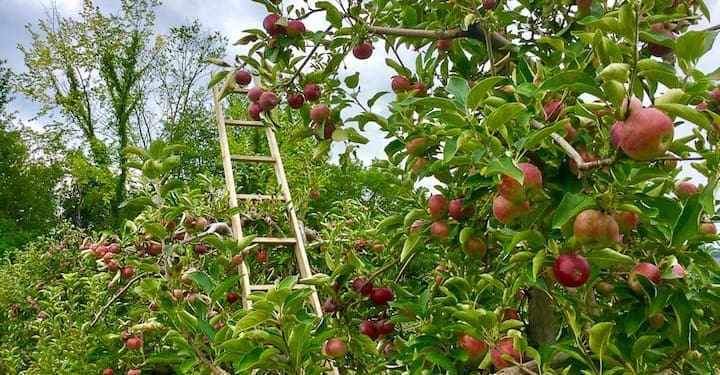ALBANY — Apple-picking, hay rides, fresh cider doughnuts, and brilliant autumnal foliage are iconic to New York State. With abundant local orchards and farms, the chance to explore the great outdoors during this time of year is never more opportune.
However, after a late frost in May, orchards in the Hudson Valley and Champlain Valley have found themselves in the position of having to rebound late in the season. In mid-April and May, apples mature and the petals fall off, making them vulnerable to temperature changes. This year, the frost arrived just when the apples began to form.
“There aren’t as many apples in the apple industry as compared to normal, but we’re doing OK,” said Isabel Prescott, whose family has owned and operated Riverview Orchards since 1944. “We feel fortunate to have apples at all; a lot of the farms got major freezes.”
Half of the Riverview Orchard crop survived the frost, which she considers “lucky.”
“It’s been really hard on the apple industry,” she said. “If you depend completely on your income as a farmer on one crop, life can be rough when you don’t have that crop. It’s a whole year’s worth of pay down the drain. You have all of the expense involved, but none of the return. Some are going to be OK, but some won’t be.“
Laura Ten Eyck, manager of Indian Ladder Farms, said this kind of late-season freeze hasn’t happened before in her memory.
“In the past, we experienced spring frosts happening during the bloom, not after fruit had begun to develop,” said Ten Eyck, whose family has operated the farm at the property for more than 100 years.
The farm wants people to know what to expect.
“You’ll see some surface scarring on some of the fruit based on when the frost hit it during its development,” said Ten Eyck. “Some of that scarring will create grooves in the shape of the fruit or marks, or just on the surface of the skin. You can still eat the fruit, as well as bake with it.”
New York is the second-most prolific apple-producing state in the country, with Washington in first place. Prescott said she wondered if those statistics may change this year.
For visitors to Riverview Orchard, it’s the education about farm life that is an important part of the experience. Prescott recalled from her childhood how visitors rarely used to take part in aspects of farming, feeding the animals, or education. Now, it is the backbone of their work and essential to their future.
“We try to give information on farms and local food sources, which are the best,” she said.
An observation bee hive educates people about the importance of honeybees for pollination and the food chain.
Visitors to Riverview can watch the award-winning apple cider doughnuts being made, feed the goats, go apple-picking, and take a free hayride on the weekends. The farm also sells pumpkins and other locally grown, seasonal products.
“When people come here, we try to make it obvious what’s going on,” she said. “That’s one of the beauties of coming to the farm.”
At Indian Ladder Farms, they take pride in how there is something for the whole family to enjoy, whether hand-picking produce, visiting farm animals, exploring the nature trails, or enjoying a beer or hard cider made with ingredients grown on the farm.
The farm encourages patrons to utilize the Pick Your Own Hotline before coming out to the farm to know what apple varieties are available at which times. The number is 1-866-640-PICK.
Indoors, the farm’s bustling Farm Store offers visitors its signature hot cider doughnuts. In the months ahead, their calendar is busy with their planned Hawaiian Oktoberfest, Wet Hop Festival, Halloween Pet Costume Contest and Parade, and more.
Despite the difficult year for orchards and farms throughout the Capital Region, Prescott highlighted the resilience of the local farming community.
“All of us [farms] are pretty unique, because there’s not that many,” said Prescott. “Each one of us has our own particular lifestyle, concerns, or hopes for the future. It’s a farm; it’s what we do. We all have the same goal: We’re producing food, food for the public, and we really believe in that.”
She said the best way to support farms is to buy locally.
“Farms like mine are small; we don’t sell to major food chains or internationally,” she said. “That’s not the goal of these small local farms in this community. We depend on our local community to buy from us. The community is the one supporting us, and we support them through what we do and what we produce.”



